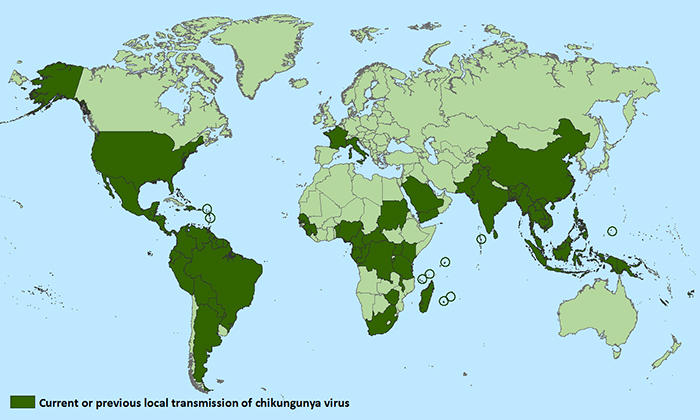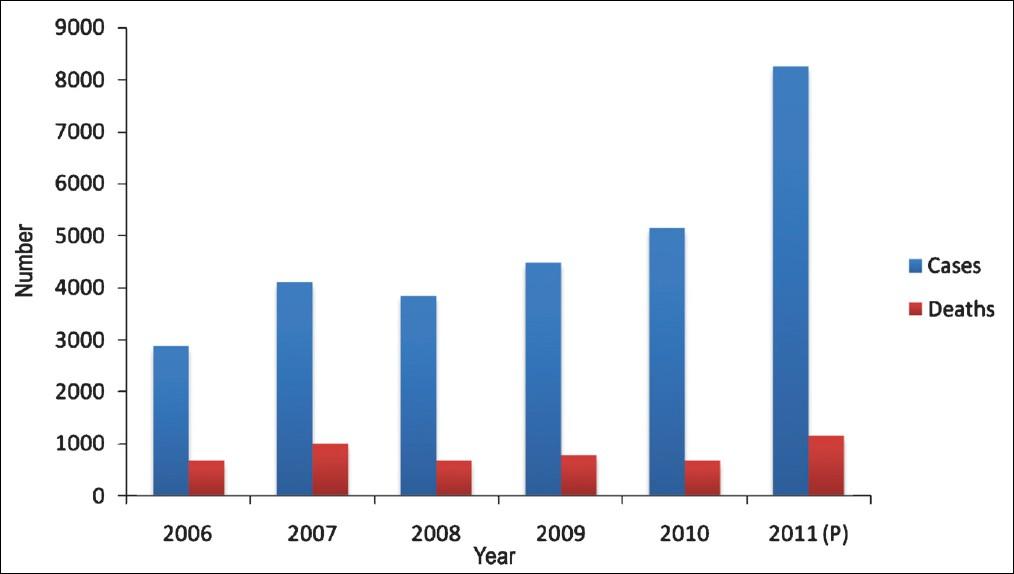History of Chikungunya
Chikungunya is one of the public health issues which are currently causing concern in the United States. Even though the spread of the virus is common in Africa and parts of Asia, a study by Foster and Vitale (2013) shows that the virus is spreading very fast to Europe and North America. Jackson (2013) states that “Chikungunya is a viral disease which belongs to the genus Alphavirus and it is transmitted to humans by infected mosquitoes.” It is believed that the disease originated from North Africa, especially in parts of Egypt and Libya.
Jackson (2013) argues that through mutation, two species of mosquito, A. aegypti and A. albopictus, emerged, and they are often blamed for the spread of the virus. From North Africa, it spread very quickly to West and Central Africa. Currently, the virus has spread to entire Africa and parts of Asia. The disease has also been diagnosed in the Middle East, North and South America, and Europe. The biggest problem that the government of the United States faces in trying to deal with the spread of this disease.
Once a given species of mosquito bites an infected person, then the virus is transmitted to the mosquito. The infected mosquito will then spread the virus to a healthy person that it bites. That is how it was spread from Africa to all parts of the world. Currently, there is no cure for Chikungunya. Once it is diagnosed, the patient will be put on medication to manage its symptoms.
Epidemiological Data
Chikungunya has become a global problem that affects several countries on various continents around the world. The Middle East, parts of Africa, Asia, North, and South America are regions where people have been diagnosed with this virus. The figure below shows regions where people have been diagnosed with the virus as of April 2016.

The figure above shows that it is only Canada and parts of Asia and Europe which are still free from the virus. Middle East, Central Africa, and South America are the worst affected areas. According to Foster and Vitale (2013), since Chikungunya is still a major health concern in the United States, the number of reported Chikungunya-related deaths has drastically reduced over the years. However, the same trend has not been witnessed in other parts of the world.
A study by Foster and Vitale (2013) shows that more people are being diagnosed with the virus and more lives are lost due to the disease than was the case five years ago. The figure below demonstrates this worrying trend.

Application of Levels of Prevention
According to Capinera (2008), medical researchers are still struggling to find a cure for the Chikungunya virus. As such, the Center for Disease Control and Prevention and the National Institute of Health has proposed several measures that can be used to prevent the spread of the virus as the only way of eradicating it. A report by Singh (2014) strongly suggests that the best way of dealing with the Chikungunya virus is to manage its spread.
There are several levels of prevention that can be embraced to manage the spread of the virus. The first level is the family unit. It is known that mosquito is the primary mode of transmission of the virus from an infected person to a healthy individual. At the family level, it is recommended that people should make an effort to ensure that they avoid mosquito bites. They can do this by sleeping under mosquito nets at night. Families are also advised to use mosquito repellants to help in reducing mosquito bites, especially during the hours just before going to bed. Families should also clear grass and eliminate stagnant waters that may enhance the breeding of mosquitoes.
The second stage is the communal level. At this level, members of the community are expected to work as a unit in fighting environmental forces that may enhance the breeding of mosquitoes. Through communal leaders, they can work together to address macro-environmental forces beyond the capacity of a single-family unit. For instance, it may be necessary to spray the bushes within the community with pesticides. This is a task that cannot be done by a single-family. It needs an effort of several family members to ensure that the set goals and objectives are achieved within the required timeline.
The third and very important stage is at the national level. The government of the United States, through the Center for Disease Control and Prevention and National Institute of Health, has conducted extensive research on how to deal with the problem of Chikungunya. At the national level, it is important to promote awareness among the public. The ministry and other departmental units can organize campaigns that will sensitize the public about the virus and how to ensure that citizens remain protected. The government can also help in screening people who have traveled from regions where the prevalence of this disease is high.
References
Capinera, J. L. (2008). Encyclopedia of entomology. Berlin, Germany: Springer.
Foster, C. S., & Vitale, A. T. (2013). Diagnosis and treatment of uveitis. New Delhi, India: Jaypee Brothers Medical.
Jackson, A. C. (2013). Viral infections of the human nervous system. New York, NY: Springer.
Singh, S. K. (2014). Emerging and re-emerging human infections: Genome to infectome. Hoboken, NJ: Wiley-Blackwell.